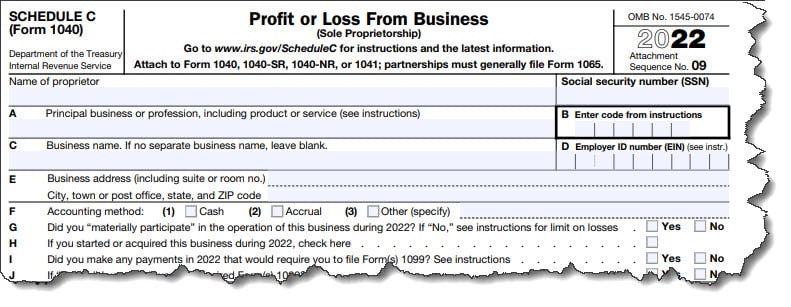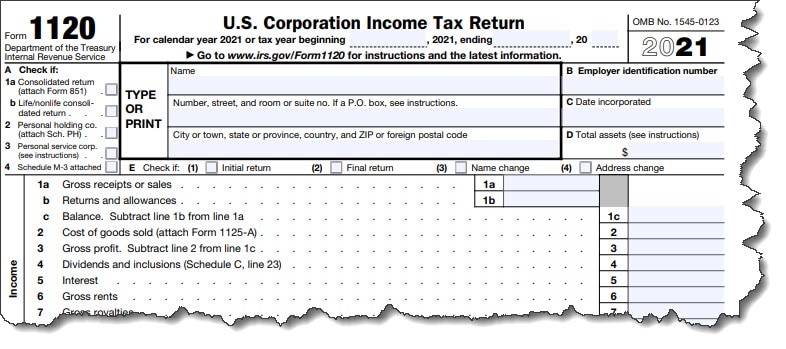The business entity you select dramatically impacts your taxes and liability. Choose wisely.
You may be required to do so much when you start a business. You should register your new company with your state and apply for licenses and permits. You’ll need an Employer Identification Number (EIN). This unique nine-digit number will be required to open a business bank account. You might also need it to file your income taxes (alternatively, you may be able to use your Social Security Number).
You’ll need to determine how to track your income and expenses early to prepare reports and file your taxes accurately. You can consult legal or financial professionals to ensure you’re doing everything right and have taken every critical step.
How you calculate your income taxes will vary depending on the business structure (like sole proprietor or LLC) you’ve selected. It also affects the tax forms you’ll file and how much personal liability you’ll take on. Let’s take a closer look at the different business structures.
Sole Proprietorship

You’re a sole proprietor if you own an unincorporated business. You must file an IRS Form 1040 or 1040-SR, a Schedule C (Profit or Loss from Business), and any other required forms and schedules. It’s the simplest business structure and isn’t subject to all the same tax obligations and government regulations as the others. You’ll be taxed as an individual since you and your company are legally considered the same entity. That also means you’re personally responsible for all liabilities or losses.
In addition to other required forms and schedules, sole proprietors must file a Form 1040 or 1040-SR and a Schedule C.
Partnership
A partnership comprises two or more entities that engage in a trade or business together. Each entity contributes their skills, labor, money, or property. Parties involved share the company’s gains or losses. A partnership is also a pass-through entity. That is, it doesn’t pay income tax. Instead, its gains and losses are passed through to the partners, who report them on their tax returns individually.
Partnerships must file the annual information return, IRS Form 1065, U.S. Return of Partnership Income. It includes reports of their income, gains, losses, credits, deductions, and more. Since partners aren’t considered employees, they do not receive W-2s. However, they’re required to file a Schedule K-1, which the partnership furnishes.
C Corporation

This type of business structure is more complicated and is usually used by larger companies with many employees. Shareholders contribute their money or property in exchange for the corporation’s capital stock shares and pay taxes when dividends get distributed. The corporation is deemed a separate legal entity. It is taxed as such, which means its shareholders aren’t subject to personal liabilities.
This business entity has complex administrative requirements. In addition to other forms and schedules required, C Corporations must file Form 1120-W, Estimated Tax for Corporations, and Form 1120, U.S. Corporation Income Tax Return.
Along with other forms and schedules, C Corporations must file an IRS Form 1120 or 1120-S.
S Corporation
S Corporations must be domestic and have no more than a hundred shareholders, one class of stock, and other requirements. They’re another pass-through entity, passing corporate income, losses, credits, and deductions to their shareholders for tax purposes. Shareholders report these pass-through gains and losses on their tax returns and pay the assessed tax at their income tax rates individually.
S Corporations must file Form 1120-W (estimated tax for corporations), Forms 1120-S, and Schedule K-1.
Limited Liability Company (LLC)
Sole proprietors and other business entities can be structured as LLCs, with different regulations depending on your state. Owners are called members and can be individuals, other LLCs, foreign entities, or corporations. Membership is unlimited, though banks and insurance companies can’t become members. The IRS considers an LLC a corporation, partnership, or part of the LLC owner’s tax return (a “disregarded entity”). Suppose an entity doesn’t want to accept its default classification or wants to change it. In that case, it must file a Form 8832, Entity Classification Election.
Understand Your Obligations
Before selecting a business entity for the first time or planning to change an existing one, please ensure you understand the relevant income tax and liability issues. We’d be happy to discuss this with you so you don’t make an unfortunate choice. We’re always available to discuss tax-related matters with you. Just contact us, and we’ll set something up.
Before selecting a business entity for the first time or planning to change an existing one, please ensure you understand the relevant income tax and liability issues. We’d be happy to discuss this with you so you don’t make an unfortunate choice. We’re always available to talk about tax-related matters. Just contact us, and we’ll set something up.

